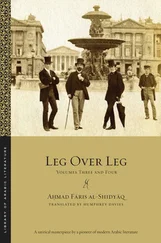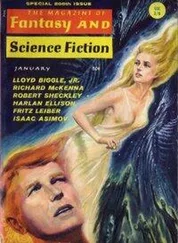297“his confidant… polemics… ecclesiastical bigwig”: the “confidant” ( najī ) was his elder brother Asʿad, whom the author visited, with other members of his family, following his adoption of Protestantism and who talked to him at length about his beliefs (al-Maṭwī, Aḥmad , 1:69); by “polemics” ( qīla wa-qāla ) the author means “religious controversy and debate”; the “ecclesiastical bigwig” ( aḥad… min al-jathāliqah ) must be the Maronite patriarch, to whom Asʿad frankly declared his beliefs in the hope of securing internal reform.
298“saddlebag” ( khurj ): this introduces the theme of “the Bag-men” ( al-khurjiyyūn ), the author’s term for Protestant missionaries (see Glossary).
299“one of the big-time fast-talking market traders” ( mina l-ḍawāṭirati l-kibār ): see Glossary.
300“God’s horsemen against the infidel !” ( yā khayla llāh ʿalā l-kuffār ): the first half of the cry used to assemble the first Muslims before battle and subsequently used as a pious invocation to action on behalf of Muslims in danger.
301“They shall roast in Hell !” ( innahum ṣālū l-nār ): Q Ṣād 38:59.
302“I shall bring you the little squit ‘before ever thy glance is returned to thee’” ( anā ātīka etc.): the wording evokes the Qurʾān (Q Naml 27:40), when a member of Sulaymān’s council volunteers to bring him the Queen of Sheba’s throne.
303“who had a speech defect involving the letter f … Boss of the the Market Difgwace” ( wa-kāna bi-hi faʾfaʾah ): the defect called faʾfaʾah is defined as “repeating and over-using the letter fāʾ in speech” and causes the Fāriyāq to say shaykh al-fusūq (literally “the Boss of Disgrace”) for shaykh al-sūq (“the Boss of the Marketplace”).
304“Shouldn’t the addition of these eighty require the eighty-lash penalty?” ( fa-lā takun ziyādatu hādhihi l-thamānīna mūjibun li-ḥaddi l-thamānīn ): the addition of fāʾ to sūq (see preceding endnote) produces fusūq ; the numerical value of the letter fāʾ in the counting system known as ḥisāb al-jummal is eighty; and the penalty specified in the Qurʾan for the fāsiq (“committer of fusūq ” or depravity) is eighty lashes (cf. Q Nūr 24:4).
305“Emotion and Motion” ( Fī l-ḥiss wa-l-ḥarakah ): both emotion and motion (of the heart) are mentioned in the opening passage.
306“the Vizier of the Right-hand Side… the Vizier of the Left-hand Side” ( wazīr al-maymanah… wazīr al-maysarah ): terms derived from popular conceptions of the organization of the courts of the caliphs, but meaning here, presumably, the primary organs on the right- and left-hand sides of the body, respectively.
307“I came not to send peace, but a sword”: Matt. 10:34.
308“he exerted himself to save the Fāriyāq from the hands of the arrogant”: following his brother Asʿad’s arrest by the Maronite patriarch in March 1826 (see n. 314, below), the author himself sought refuge with the Protestant missionaries with whom Asʿad had consorted, and these hid him in Beirut before sending him abroad in December of the same year.
309“the Island of Scoundrels” ( Jazīrat al-Mulūṭ ): i.e., Malta, normally Māliṭah .
310“the golden calf ” ( al-baʿīm , literally, “the idol”): presumably a reference to the “idolatry” implied by the presence of statues of the Virgin Mary and saints in Maronite churches.
311“ignoble and, beside that, basely born ” ( ʿuṭullin wa-baʿda dhālika zanīm ): Q Qalam 68:13.
312“there is therein no crookedness” ( ghayru dhāti ʿiwajin ): an echo of Q Zumar 39:28 (“[an Arabic Koran,] wherein there is no crookedness” (Arberry, Koran , 473).
313“Sh…! Sh…!” ( al-khur! al-khur! ): the passenger thinks the Fāriyāq is trying to say “The shit! The shit!” ( al-khurʾ! al-khurʾ! ), when, in fact, he is trying to say, in his delirium, “The saddlebag! The saddlebag” ( alkhurj! al-khurj! ).
314Asʿad: Asʿad al-Shidyāq (1798–1830), the third eldest brother in the family (the author being the fifth and youngest), became convinced of the truth of Protestantism after associating with American evangelical missionaries in Beirut and was detained on charges of heresy by Maronite patriarch Yūsuf Ḥubaysh at his palace at Qannūbīn, where he died after some six years of maltreatment. For a detailed account of the events leading to and surrounding Asʿad’s death and their significance, see Makdisi, Artillery , and Alwan, Aḥmad , chap. 1.
315Qannūbīn: a valley in northern Lebanon, site of numerous Christian monasteries, including a former seat of the Maronite patriarch.
316Mikhāʾīl Mishāqah (1800–1888 or 1889): first historian of later Ottoman Lebanon, who converted from Greek Catholicism to Protestantism in 1848.
317“the Mutawālīs”: the Twelver Shiites of Lebanon.
318“the Anṣārīs”: a Shiite sect with distinctive teachings and cosmology, with followers in Lebanon, Syria, and elsewhere in the region.
319“Some of them… have written histories”: the material that follows, even though attributed below by the author to several writers, appears to be taken mostly — and in some cases word for word — from Voltaire’s Essai sur les moeurs et l’esprit des nations , chaps. 35–37 (see, e.g., http://fr.wikisource.org/wiki/Essai_sur_les_mœurs, accessed 6 March 2013).
320“Pope Amadeus VIII, known as the Duke of Savoy”: the name and number refer, in fact, not to a pope but to Duke Amadeus VIII of Savoy (1383–1451), who did, however, become antipope, assuming the papal name of Felix V, when elected by the dissident rump of the Council of Basel. The spelling Armadiyūs in the Arabic is an error.
321“the Council of Basel was convened specifically to depose Pope Eugene”: the Council of Basel was convened in 1431 to limit the powers of the papacy. Pope Eugene IV (r. 1431–47) sought to disband the council, a rump of which remained at Basel and elected the antipope Felix V.
322Nicholas I (r. 858–67) excommunicated the Bishop of Cologne over the latter’s support for Emperor Lothar II’s petition for an annulment of his marriage that would allow him to marry his mistress.
323“Ambrose, governor of Milan”: Aurelius Ambrosius (Saint Ambrose) (ca. 340–97) became Bishop of Milan after originally being governor of Emilia and Liguria, with headquarters at Milan. The author’s reference to his “unsoundness” of belief may derive from the fact that Ambrose was neither baptized not formally trained in theology when elected bishop by popular acclaim, but his later contributions to theology resulted in his being numbered among the four Latin Fathers of the Church.
324“Pope John VIII… Photius”: Pope John VIII (r. 872–82) recognized the reinstatement of Photius as the legitimate patriarch of Constantinople after he had been condemned by Adrian VII. Photius (ca. 810–93) gained, lost, and regained the patriarchate of Constantinople against a background of the struggle between rival candidates for the Byzantine throne, a struggle in which the Western church attempted to intervene. The Western church eventually anathematized Photius, while the Eastern canonized him.
325“Pope Stephen VII… Formosus”: under pressure from a leading Roman family supportive of Pope John VIII and opposed by Formosus, then Bishop of Porto, Stephen VI (r. 896–97) had the remains of Formosus (pope, r. 891–96, and Stephen’s last predecessor but one) exhumed, put him on trial, and sentenced him to the punishments described.
Читать дальше












